Waltah Clarke’s journey into the world of Hawaiian apparel is a captivating story that blends the aloha spirit with bold business acumen. Born Walter Clarke in Los Angeles in 1912, he transformed not just his name but the fashion industry itself, bringing the vibrant culture of Hawaii to the mainland. Clarke’s fascination with Polynesian life began when he moved to Hawaii in 1938, immersing himself in the island’s customs, music, and lifestyle. This passion soon turned into a mission to share the beauty of Hawaiian culture with the world. His first step was opening a Hawaiian clothing store at the El Mirador Hotel in Palm Springs in 1952, a move that marked the beginning of an iconic brand known for its distinctive aloha wear.
The success of that first store was immediate, and Clarke quickly expanded his retail empire across the mainland and back to Hawaii. By 1980, Waltah Clarke’s Hawaiian Shops had become the largest retailer of aloha wear in the nation, boasting 31 locations, including stores in fashionable locales like Beverly Hills, Palm Beach, and Chicago, as well as 17 locations across Hawaii. His stores became the go-to destination for Hawaiian shirts, swimwear, and the popular muumuu, a traditional Hawaiian garment that was reimagined under the creative direction of his wife, Gretchen Clarke. Together, they innovated and adapted these traditional styles, making them fashionable for contemporary audiences, with creations like the “mini muu,” a modern, shortened version of the muumuu that became a hit among younger customers in the 1960s.
Waltah Clarke’s influence on Hawaiian fashion was not just limited to clothing; he was also a master of promotion and publicity, always finding ways to keep the brand at the forefront of fashion trends while staying true to its Hawaiian roots. His love for the islands and their culture was evident in every aspect of his business, from the designs of the clothes to the ambiance of his stores. Clarke’s efforts were recognized at the highest levels, with Hawaii’s Governor John A. Burns awarding him a special citation of merit in 1975 for his substantial contribution to the economic development of Hawaii. Today, vintage pieces from Waltah Clarke’s Hawaiian Shops are treasured not only for their style but also as pieces of history that embody the spirit of aloha and the innovative spirit of one of Hawaii’s most influential fashion pioneers.
How to tell if Waltah Clarke’s is vintage from the logo
Waltah Clarke’s, known for its iconic Hawaiian and tropical wear, has had various logo iterations over the decades. These logos not only serve as identifiers for authenticity but also help in dating the vintage pieces. Below is an examination of the logo used by Waltah Clarke’s during a specific era, which can help you determine if your item is vintage.
1960s to 1980s Waltah Clarke’s logo
- This era features a script-style logo that is elegant and flows smoothly, reflecting the relaxed yet refined nature of the brand’s Hawaiian wear.
- The lettering is often embroidered, showcasing a rich brown thread, which was typical for this period.
- The ‘Waltah Clarke’s’ name is prominently displayed in cursive, with a noticeable emphasis on the first letters of each word, making it distinct.
- The font style is slightly slanted, adding to the casual, laid-back feel associated with the brand during this era.
- Overall, the logo from this period is both a marker of vintage authenticity and a reflection of mid-20th century tropical fashion trends.

1960s to 1980s Waltah Clarkes logo
How to tell if Waltah Clarke’s is vintage from the tags
Waltah Clarke’s has been a significant name in the world of Hawaiian fashion, with a distinctive style that has evolved over the decades. The tags on Waltah Clarke’s garments are an excellent indicator of their vintage status, reflecting the brand’s changes in design, manufacturing locations, and stylistic elements through the years. Below is a breakdown of the different eras of Waltah Clarke’s tags based on the images provided.
Having difficulty identifying vintage tags or labels? Submit a picture on our vintage tag identification page, and we’ll assist you!
1960s vintage Waltah Clarke’s tags
- Bold serif font featuring “Waltah Clarke’s” in a handwritten script, often in contrasting colors.
- Use of floral motifs, especially the hibiscus, indicating the Hawaiian theme.
- Includes “Made in Honolulu for” followed by various store locations, highlighting the brand’s Hawaiian roots.
- Tags often have a simplistic and clear design, with minimal use of colors.
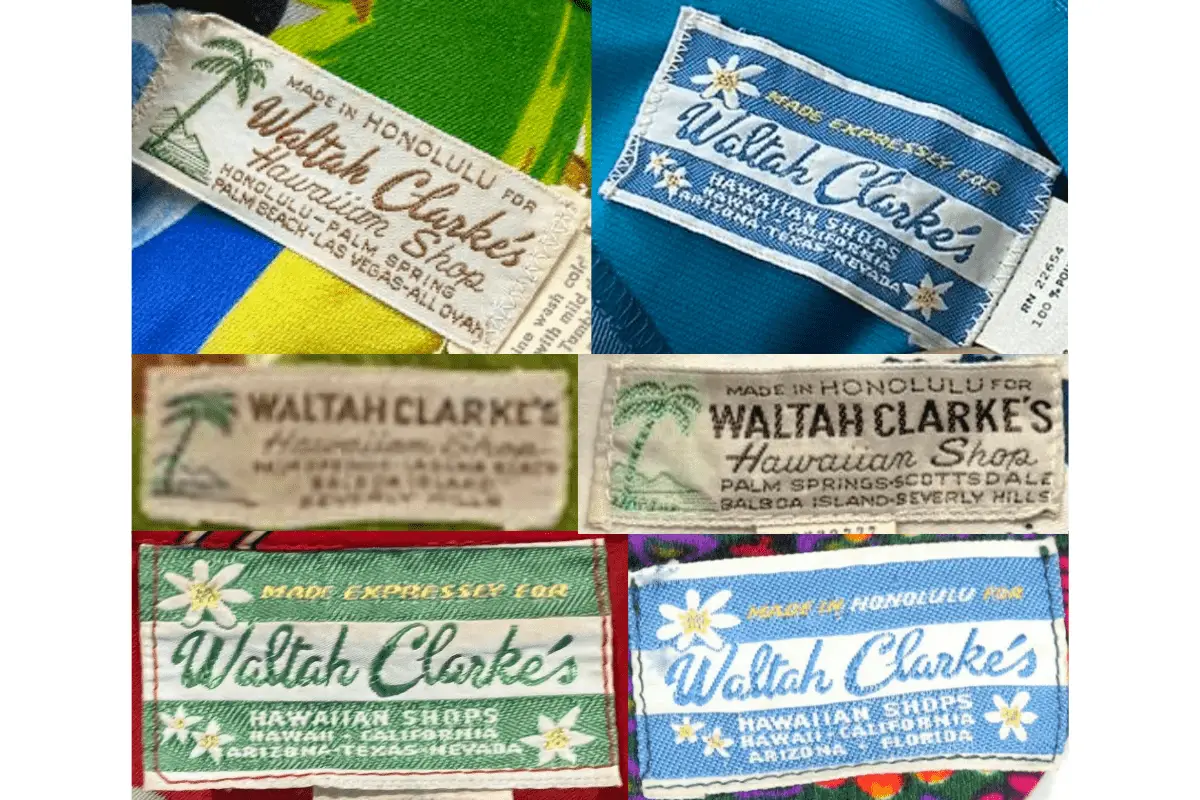
1960s Waltah Clarke’s tags
1970s vintage Waltah Clarke’s tags
- Introduction of more vibrant colors, including blues and yellows, which reflect the bold fashion trends of the decade.
- The tags often feature “Made Expressly for” or “Made in Honolulu for,” maintaining the brand’s connection to Hawaii.
- Use of floral graphics continues, but with more detailed and colorful designs compared to the 1960s.
- Tags are larger and more elaborate, sometimes incorporating multiple fonts and colors for a striking appearance.
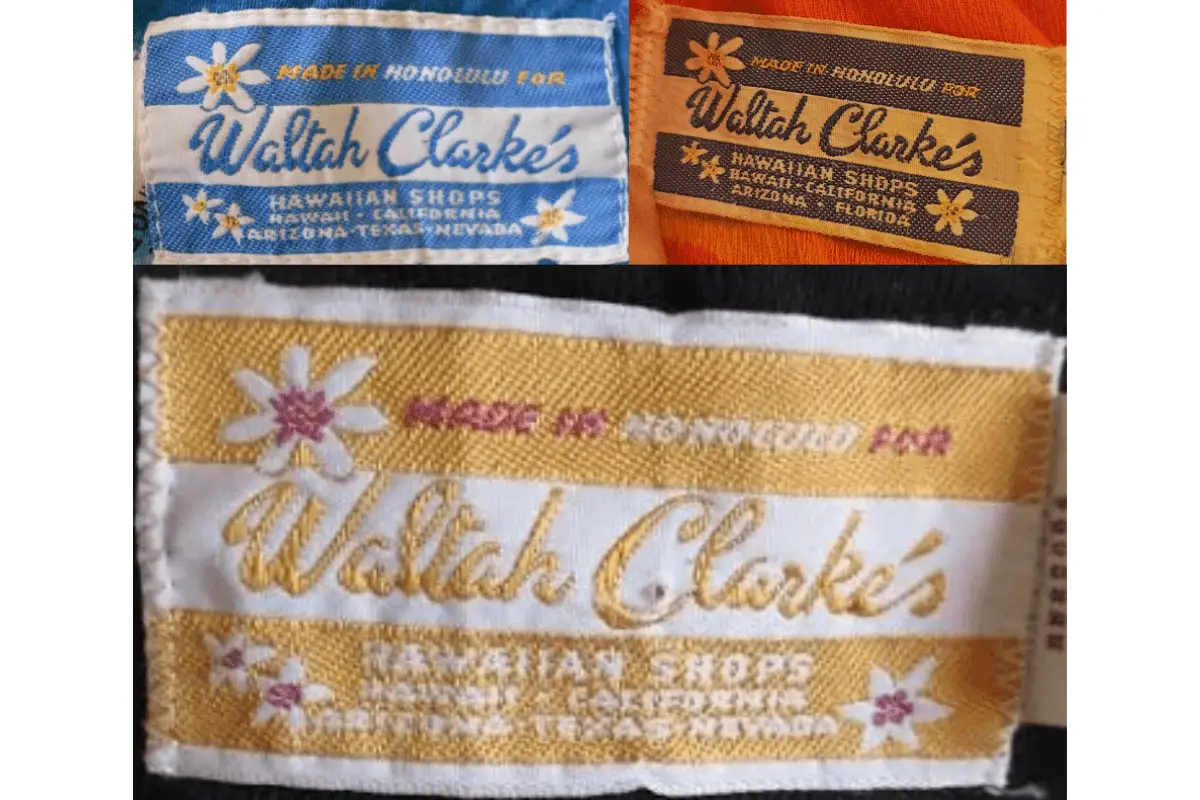
1970s Waltah Clarke’s tags
1980s vintage Waltah Clarke’s tags
- Continued use of vibrant and contrasting colors, with tags often featuring a mix of blue, white, and yellow.
- The font style becomes more playful and varied, reflecting the eclectic fashion sense of the 1980s.
- Floral designs remain prominent, often with more intricate and larger motifs.
- The text “Made in Honolulu for” remains a staple, reinforcing the brand’s identity and origin.
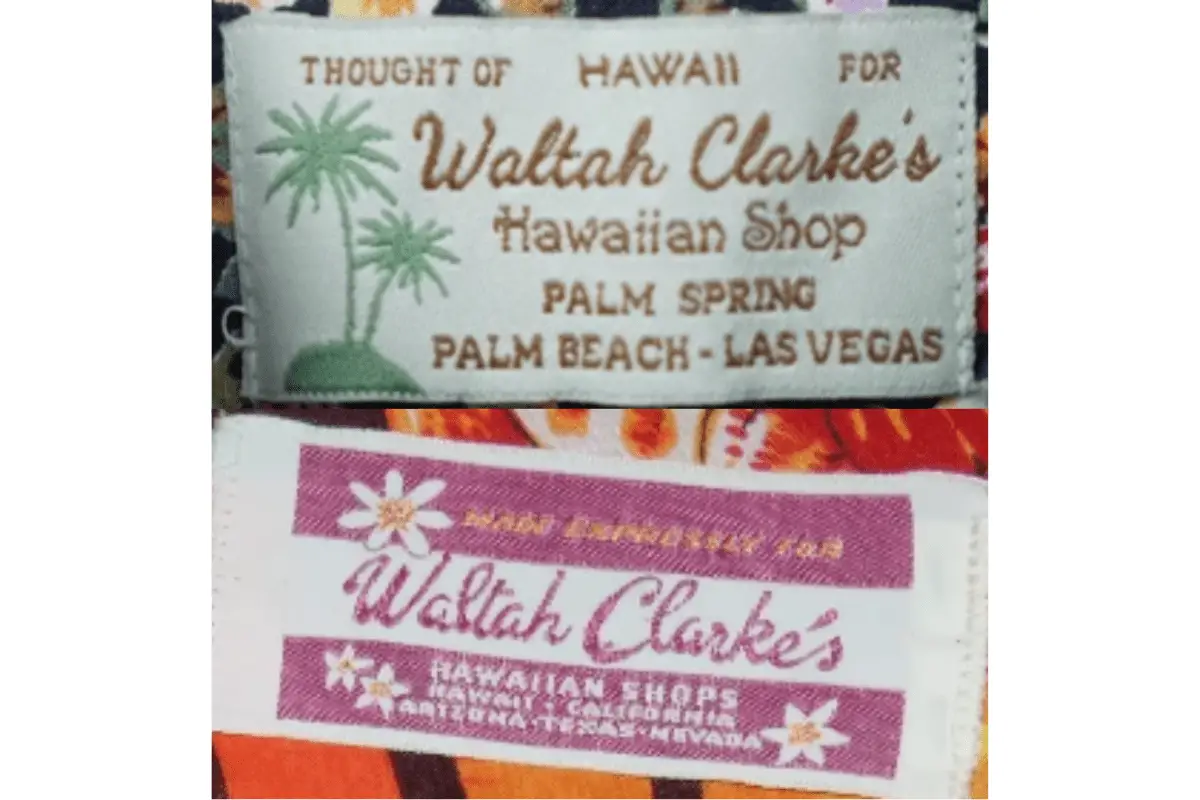
1980s Waltah Clarke’s tags


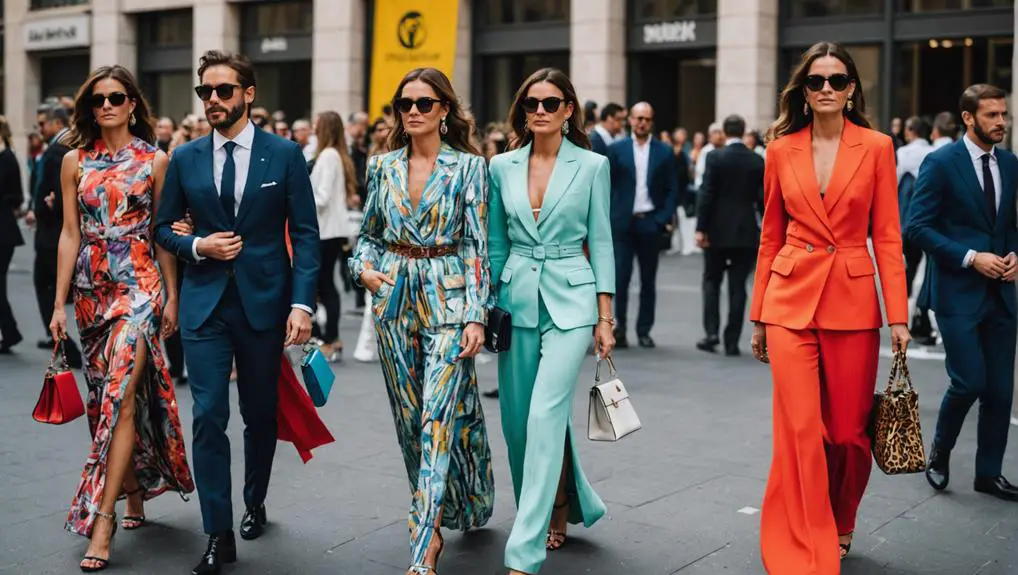
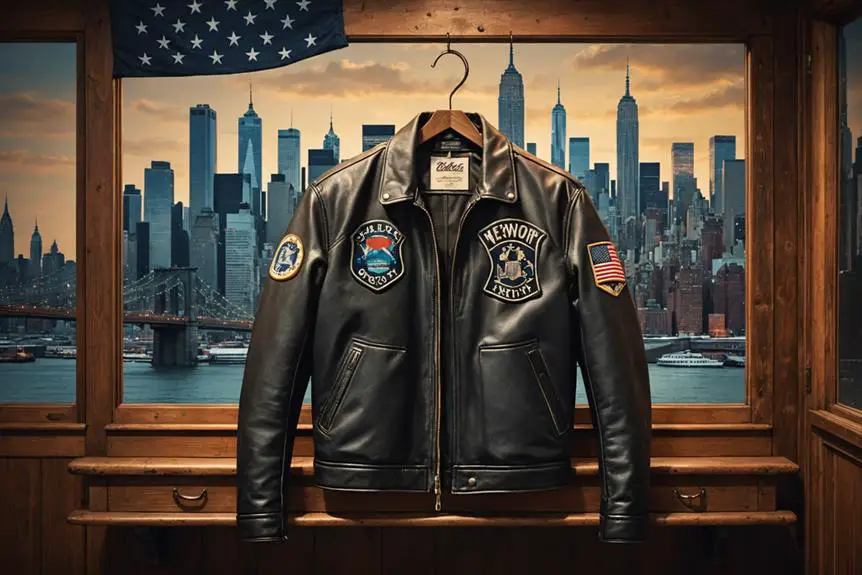
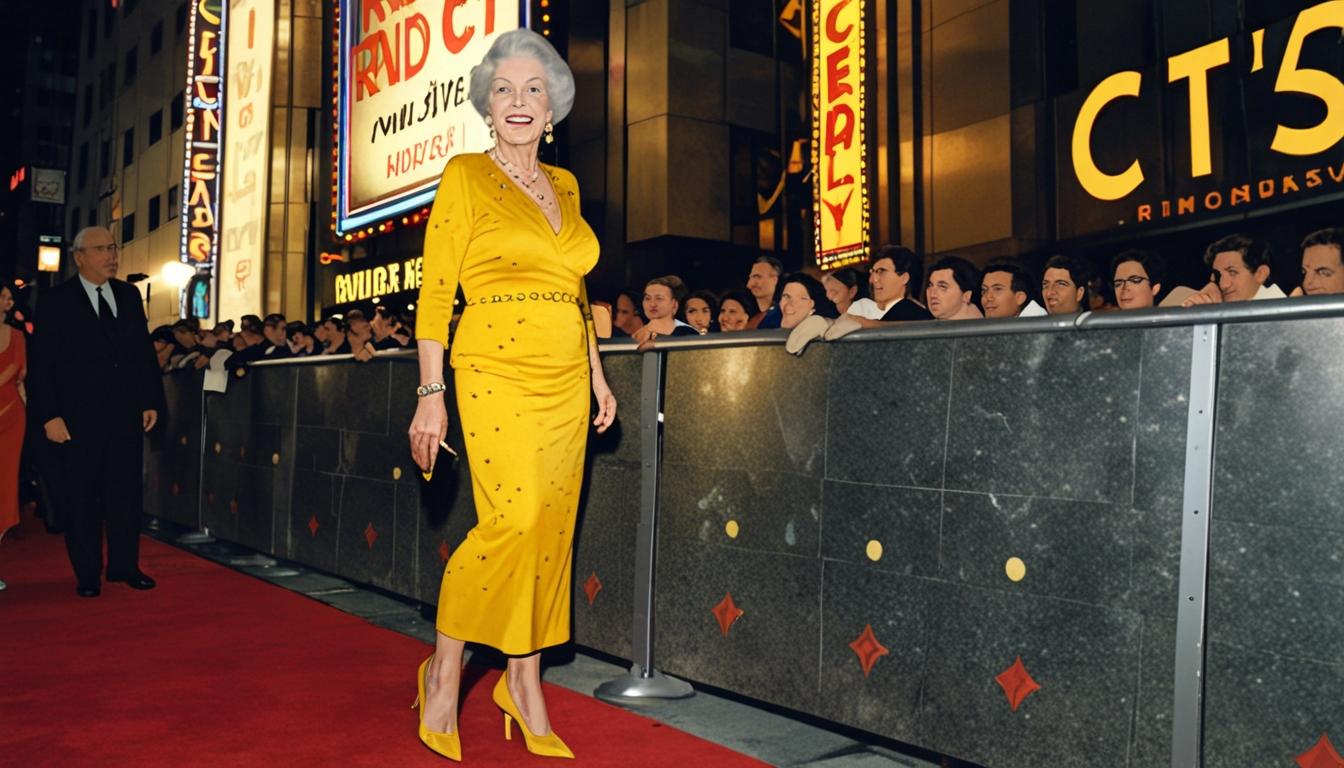
Your point of view caught my eye and was very interesting. Thanks. I have a question for you.
Thank you for your sharing. I am worried that I lack creative ideas. It is your article that makes me full of hope. Thank you. But, I have a question, can you help me?